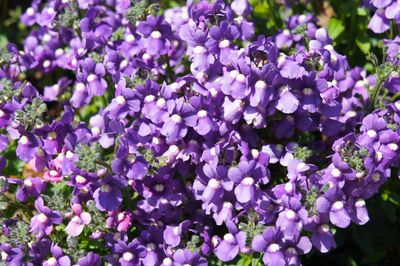While nemesia plant problems aren’t usually serious, this long period of growth provides more opportunity for disease to develop and pests to attack. These are common nemesia issues for which to keep an eye out. Learn how to spot them in early development so they don’t mar your beautiful flowering plants.
What’s Wrong with My Nemesia?
Problems with nemesia may include the following: Powdery Mildew: A white powdery substance on leaves and stems is often fungal mold, also called powdery mildew. This starts in spring when conditions are still damp and humid, but temps have warmed. It will spread among the nemesias, but likely won’t affect other nearby plants. Avoid this fungus by watering plants at the roots, as overhead watering encourages spread and development. Aphids: If you see a swarm of tiny black bugs around new growth when you’re nemesia troubleshooting, it is likely aphids. Blast them off with the water hose, trying to avoid wetting foliage unnecessarily. If they return, spray with an insecticidal soap or neem oil when the sun is not shining on the plants. Western Flower Thrips: Tan scars on foliage and white scars on flowers are an indication of this pest. Look for a light brown pest with clear wings. Treat thrips with insecticidal soap before moving on to insecticide if soap spray is unsuccessful. Insufficient Fertilization: Yellowing of lower leaves are sometimes the result of nitrogen deficiency. Use a balanced fertilizer to provide nitrogen when signs appear. Phosphorous is needed for a healthy root system and longer lasting blooms. A lack of this nutrient may appear as purple coloring in the leaves and non-flowering. Remove damaged leaves in both cases. Bacterial Leaf Spot: Another problem caused by using overhead irrigation, greasy black spots start on lower leaves and move up the plant. Water at the roots to avoid this issue. In most cases, nemesia plants are problem free and need only watering, afternoon shade in hot areas, and an overall pruning when blossoms fail.
